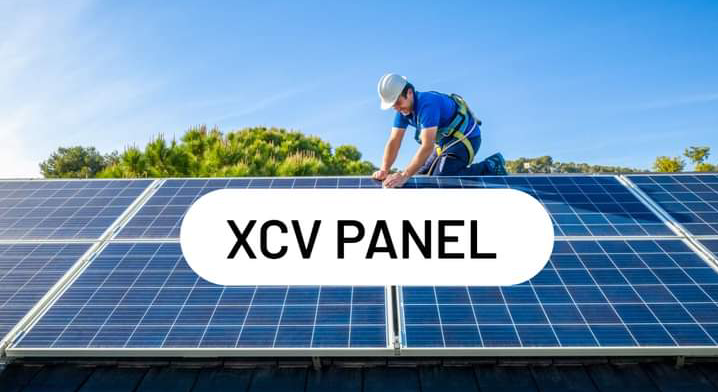Introduction to XCV Panels
Welcome to the world of XCV Panels – the versatile solution for all your paneling needs! Whether you’re a DIY enthusiast or a professional looking to enhance your space, XCV Panels offer a range of features and advantages that make them stand out from the crowd. In this blog post, we’ll explore everything you need to know about XCV Panels – from their key features and common uses to installation instructions and alternatives. So, let’s dive in and discover how XCV Panels can elevate your projects to the next level!
What are the Features of XCV Panels?
XCV Panels are known for their advanced features, making them popular in various industries. These panels come equipped with state-of-the-art technology, including high-resolution displays and touch-screen capabilities. The sleek design of XCV Panels not only enhances the aesthetics of any space but also provides a user-friendly interface for easy navigation.
One key feature of XCV Panels is their versatility. They can be customized to suit different applications, whether for interactive presentations, digital signage, or control systems. With built-in Wi-Fi connectivity, users can easily access online content and updates without hassle.
Moreover, XCV Panels are designed to be energy-efficient, contributing to cost savings in the long run. The durable construction ensures longevity and reliability even in demanding environments. These panels offer seamless integration with other devices and software for enhanced functionality.
The features of XCV Panels set them apart as innovative solutions for modern businesses seeking cutting-edge technology to streamline operations and enhance communication.
Common Uses of XCV Panels
XCV panels are versatile and find common uses across various industries. One of the primary applications is in renewable energy systems, where XCV panels can efficiently convert sunlight into electricity. They are also commonly used in residential and commercial buildings to provide a sustainable power source.
Moreover, XCV panels are utilized in off-grid locations or areas with unreliable access to traditional power sources. This makes them ideal for remote cabins, RVs, boats, and other mobile applications where conventional power supply may not be feasible.
In addition to energy generation, XCV panels have also found their way into the automotive industry. Electric vehicles often incorporate these panels to harness solar energy for auxiliary power needs like charging batteries or running onboard electronics.
The flexibility and efficiency of XCV panels make them a popular choice for diverse applications ranging from small-scale projects to large industrial installations.

Advantages of Using XCV Panels
Looking to upgrade your building’s aesthetics and functionality? XCV panels offer a range of advantages that make them a popular choice for residential and commercial projects.
One key advantage of using XCV panels is their durability. Made from high-quality materials, these panels are built to withstand the test of time, ensuring long-lasting performance without frequent maintenance needs.
Another advantage is the versatility of XCV panels. Available in various colors, sizes, and designs, they can be customized to fit any architectural style or design preference, allowing endless creative possibilities.
Moreover, XCV panels are known for their energy efficiency. With excellent insulation properties, these panels help regulate indoor temperatures effectively, reducing heating and cooling costs over time.
Additionally, XCV panels are easy to install compared to traditional building materials. Their lightweight nature makes handling and installation a breeze for contractors and DIY enthusiasts alike.
Alternatives to XCV Panels
A few options are worth exploring if considering alternatives to XCV panels. One alternative is traditional solar panels, which have been widely used longer. While these may be more familiar, they tend to be bulkier and less flexible regarding installation.
Another option is lightweight, thin-film solar panels, which can be integrated into various surfaces such as roofs or walls. However, they usually have lower efficiency compared to XCV panels.
Some people also look into solar shingles as an alternative. These mimic the appearance of traditional roof shingles while harnessing solar energy. Although they blend seamlessly with the roof’s aesthetics, they may not be as efficient or cost-effective as XCV panels.
When considering alternatives to XCV panels, it’s essential to weigh factors like efficiency, cost-effectiveness, and aesthetic appeal based on your specific needs and preferences.
Step-by-Step Installation Instructions for XCV Panels
Installing XCV panels is a straightforward process that can be done by following these simple step-by-step instructions. Ensure you have all the necessary tools and materials ready for installation. Start by measuring and marking the area where the panels will be installed to ensure precision.
Next, prepare the surface by ensuring it is clean, dry, and free from debris or dust. This will help the panels adhere correctly. Apply an appropriate adhesive to the back of each panel before pressing them firmly onto the wall or ceiling in a staggered pattern for a seamless finish.
Continue this process until all panels are securely in place. Use a level to check for straightness throughout the installation. Trim any excess material if needed to fit corners or edges perfectly. Please step back and admire your newly transformed space with stylish XCV panels enhancing its aesthetic appeal effortlessly!
Conclusion
After exploring XCV panels’ features, uses, advantages, alternatives, and installation instructions, it’s clear that this innovative product offers a versatile solution for various applications. With its durable construction and easy installation process, XCV panels provide a cost-effective option for residential and commercial projects.
The flexibility and efficiency of XCV panels make them a top choice for those looking to enhance their properties with sustainable materials. Whether you want to improve energy efficiency or add a modern touch to your space, XCV panels offer endless possibilities.
As technology advances in the construction industry, products like XCV panels pave the way for eco-friendly solutions that meet functional and aesthetic needs. Stay ahead of the curve by considering XCV panels for your next project – you won’t be disappointed with the results!
FAQs
Q: Are XCV panels suitable for outdoor use?
A: XCV panels are designed to withstand various weather conditions and can be used outdoors.
Q: How long does it take to install XCV panels?
A: The installation time for XCV panels may vary depending on the size of the project and experience level. On average, it takes a few hours to complete the installation process.
Q: Can I paint or customize my XCV panels?
A: You can paint or customize your XCV panels to match your desired aesthetic. Just make sure to use appropriate materials for a lasting finish.
Q: Are there specific maintenance requirements for XCV panels?
A: Regular cleaning with mild soap and water is usually sufficient to maintain the appearance of XCV panels. Avoid harsh chemicals that could damage the surface.
Q: Where can I purchase XCV panels?
A: You can find various options for purchasing XCV panels online or at local hardware stores. Be sure to check with suppliers for availability and pricing.
Also Read: how tall is peso pluma




Pingback: Tranny Tube: Innovation and Technology in Automotive Engineering